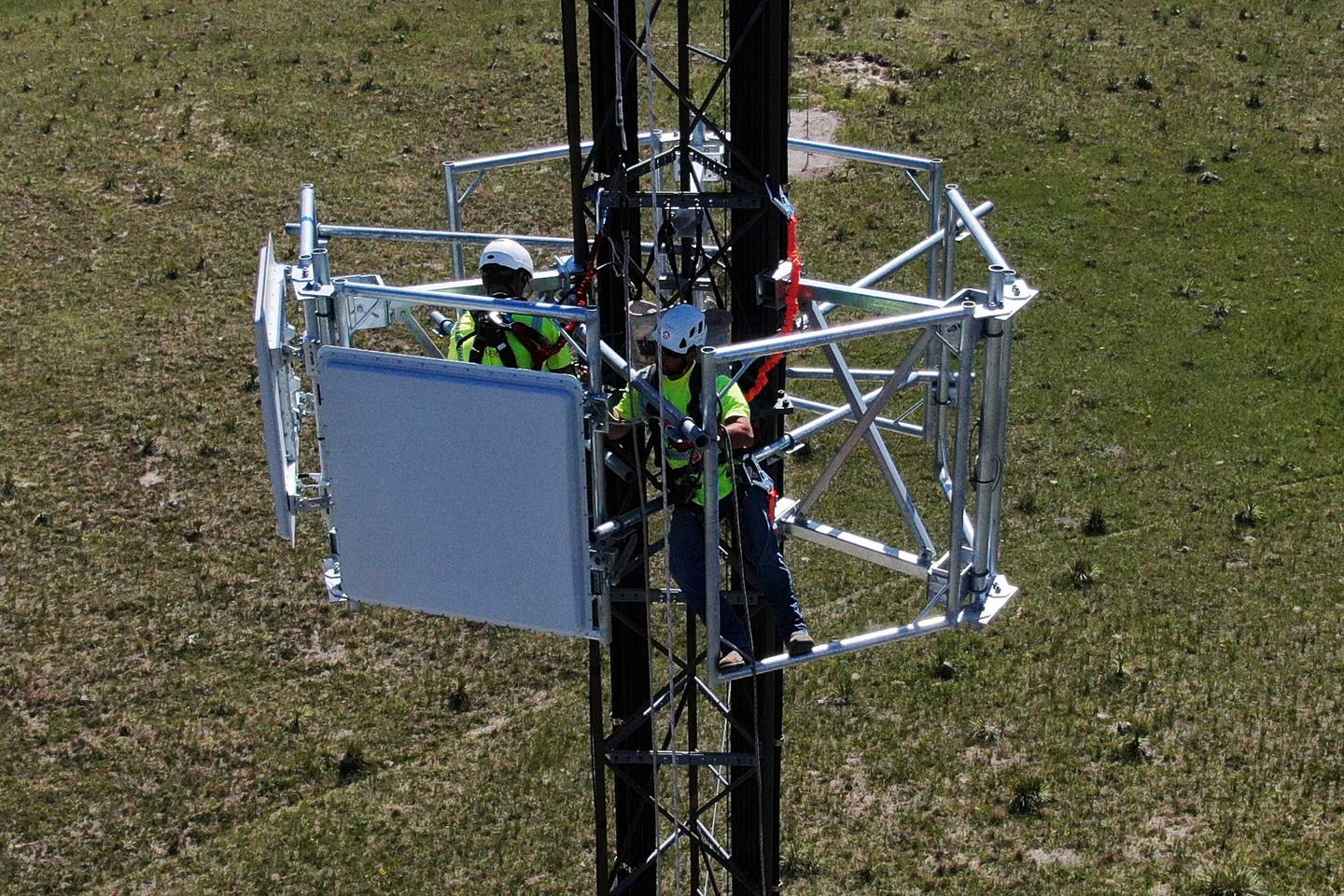FreeFlight Systems Testing 5G-Resistant Radar Altimeter
Texas company designs unit for rotor- and fixed-wing aircraft to prevent 5G interference.

Members of the aviation industry have expressed concern that 5G may interfere with radio altimeters of aircraft on approach to certain airports. [Credit: Adobe Stock]
FreeFlight Systems has completed the first round of formal testing on its new 5G friendly radar altimeter, with encouraging results, says FreeFlight Systems president Anthony Rios.
The company started developing the Terrain series radar altimeters in 2019 in preparation for 5G activation, which industry experts say has the potential to corrupt older-style radar altimeters.
“We set out to design the Terrain series to coexist with C-Band 5G networks from a clean sheet. Today, it is the only altimeter in the market that has been specifically designed for this,” he says. "We now look forward to seeing the benefits to safety our radar altimeters will have for operators around the world.”
Aviation officials warned that 5G signals could potentially disrupt radio altimeters aboard aircraft, constituting a safety hazard in low visibility situations. The data supplied by radio or radar altimeters gives the pilot information about the aircraft height above terrain, and supplies information for several other systems aboard sophisticated aircraft used by airlines.
When this data is suspect, the aircraft cannot land.
Several aircraft manufacturers and airlines are currently working with the FAA to develop workaround procedures for aircraft and 5G.
According to FreeFlight, the testing on the TERRAIN designs was completed using industry standards and methodology to determine the interference tolerance of the radar altimeters in terms of their protection radius, or how close the radar altimeter could be to 5G towers without being affected.
The better the interference tolerance of the unit, the smaller the protection zone has to be around a given 5G antenna.
“Despite the exceptional performance, we do not want to stop here,” Rios says. “The innovative design enables FreeFlight Systems to continue to refine the 5G interference performance of the Terrain series through software enhancements. Further improvements will be available to Terrain series customers as field loadable software updates—effectively future-proofing the radar altimeter for FAA minimum performance standards expected to evolve in the future.”
The Terrain series’ Design Assurance Level (DAL) B criticality, dual-install compatibility, altitude measurement range of up to 2,500 feet, and 55,000-ft service ceiling make them ideal for new or retrofit Part 29 rotorcraft and larger fixed-wing aircraft installations. The small-footprint design means that it can easily be installed in place of legacy altimeters from various manufacturers.
How We Got Here
In March 2020, the United States Federal Communications Commission (FCC) adopted final rules authorizing flexible use of the 3.7 to 3.98 GHz band for next generation services. This includes 5G and other advanced spectrum-based services.
Pursuant to these rules, this C-Band wireless broadband deployment was permitted to occur in phases with the opportunity for operations in the lower 100 megahertz of the band in 46 markets. The deployment was slated to begin as soon as December 5, 2021, however, upon request of the FAA, telecommunications providers AT&T and Verizon voluntarily agreed to delay their plans for deployment of 5G until January 2022 as the technical details were worked out among communications and aviation industry leaders across the world.

Sign-up for newsletters & special offers!
Get the latest FLYING stories & special offers delivered directly to your inbox






